Monday Dec 29, 2025
Monday Dec 29, 2025
Tuesday, 11 December 2018 01:10 - - {{hitsCtrl.values.hits}}

By Uditha Jayasinghe
South Asia, despite being the least integrated region in the world, has the potential to tap strong trade and development with the right policies and proper implementation, experts said yesterday.
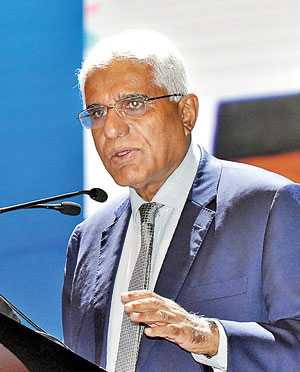 |
Chief Guest Central Bank Governor Dr. Indrajit Coomaraswamy |
 |
Guest of Honour Asian Development Bank (ADB) Director of the Public Management, Financial Sector and Trade Division of the South Asia Department, Bruno Carrasco |
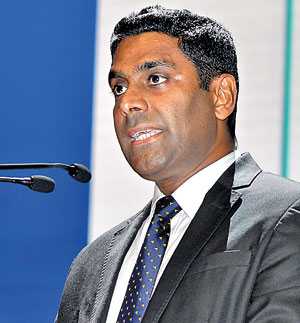 |
Association of Professional Bankers – Sri Lanka (APB) President Asanka Ranhotty |
Delivering the inaugural address at the 30th Anniversary Convention of the Association of Professional Bankers - Sri Lanka held at the BMICH and titled ‘Regional Congruence: Harmonising Policy and Economic Prosperity’, Central Bank Governor Dr. Indrajit Coomaraswamy pointed out that there was huge potential in trade and investment that could power the region to faster growth.
All South Asian countries would benefit from deeper regional trade and connectivity, he noted, calling for countries to learn lessons from East Asia where even though Japan, South Korea and China have troubled histories among themselves that has not prevented them from doing billions of dollars of business. Dr. Coomaraswamy called for this same level of pragmatism in South Asia.
“We are living in a world where multilateralism in on the wane but regionalism is gaining increasing salience. Trade between India and Pakistan is about $ 2 billion but analytical studies done by the World Bank show that without artificial barriers bilateral trade between the two countries could be as high as $ 37 billion. SAARC interaction can go beyond economic gain and help nurture trust and peace as well. Improved connectivity in the region can yield significant benefits. For instance, there are now direct flights between Sri Lanka and 14 Indian cities with almost 150 flights a week. This has helped India become the largest source of tourism to Sri Lanka,” he said.
Sri Lanka’s present political turmoil, which resulted in the downgrading of Sri Lanka’s sovereign rating, can have far-reaching consequences. However, as professionals who have opted to stay back in our motherland, we need to wade through these impediments and do our best to contribute to institutions we are working for - Association of Professional Bankers President Asanka Ranhotty
SAFTA underperformance
Despite the existence of the South Asia Free Trade Agreement (SAFTA) since 2006, South Asia is still far from achieving the goal of tariff-free trade. Countries in the region levy opaque tariffs that are essentially import duties in disguise. Dr. Coomaraswamy pointed out that the reality is that there are substantial duties on a wide range of products traded within South Asia despite the existence of SAFTA. Even though para-tariffs are beyond the ambit of SAFTA they have contributed significantly to its underperformance.
“According to a World Bank report, a country’s development also depends on the social norms and mindset of the people. When there is trust among people economies do well. Trust promotes trade, trade fosters trust, so the two phenomena are mutually reinforcing. Trade also promotes interdependency and inclination to peace. A lack of trust has greatly inhibited trade in South Asia and regional economies trade better with external partners than with their own neighbours,” he added.
The Trade Restrictiveness Index for tariffs in India, Nepal, Pakistan and Sri Lanka is two to nine times higher for imports from the South Asian region than for imports from the rest of the world. The costs of trade are also disproportionately high within South Asia when compared with the other regions. South Asian rates are about 20% higher than ASEAN and over three times higher than within the North American Free Trade Agreement (NAFTA). There are also regulations that prohibit land trade, especially between the three largest countries in the region, non-tariff barriers that are aimed at protecting health and safety are overly burdensome, Dr. Coomaraswamy noted, adding visa constraints also limited investment and services such as tourism.
“For all these reasons there is a large gap between reality and potential as far as intro-regional trade in South Asia. However, progressive liberalisation on Indo-Sri Lanka air services, border market growth between India and Bangladesh, land transit progress, sharing electricity and water management in the north-east are positive developments. Negotiations are underway to expand the Indo-Sri Lanka Free Trade Agreement (FTA) in goods into an Economic and Technical Cooperation Agreement (ETCA) covering not only goods but also services, investment, technology and training.”
When there is trust among people economies do well. Trust promotes trade, trade fosters trust, so the two phenomena are mutually reinforcing. Trade also promotes interdependency and inclination to peace. Lack of trust has greatly inhibited trade in South Asia and regional economies trade better with external partners than with their own neighbours - Central Bank Governor Dr. Indrajit Coomaraswamy
Checklist for trade
An agenda for promoting regional congruence should include developing an accelerated and time-bound schedule for reducing and eliminating the SAFTA sensitive list, except for few products of exceptional concern.
In addition, policymakers should establish a schedule for the removal of para-tariffs within a timeframe that is credible, taking into account the impact on government revenue and domestic producers. This can be accelerated by the removal of para-tariffs on items not on sensitive lists. There must be a multi-pronged approach to address taxes, trade facilitation measures, infrastructure development and related issues of connectivity costs, the Governor said.
“As for the trust deficits that have constrained regional congruence for the last 70 years, the experiences of small cross-border trading between India and Bangladesh offer relevant insights. Increased regional congruence will create both winners and losers. This places emphasis on the careful management of implementation. There should be a clearly articulated national trade policy, which attaches priority to regional congruence in each of the countries and there needs to be a holistic approach that covers calibrated trade liberalisation, trade facilitation and improvement in the ease of doing business, attracting FDI, improving links between education and skills development and the labour market, strengthening training and safety nets for workers whose jobs are affected and transparent fiscal packages for firms or sectors that will be adversely affected by trade reform.”
At a time when the Doha trade negotiations are at an impasse, South Asia can enjoy a considerable upside by promoting regional congruence. However, it requires a holistic effort, which addresses the full range of the challenges involved. Regional cooperation also results in diversifying regional markets, specifically for countries with shallow and underdeveloped financial markets, which do not provide the required diversification for investment opportunities. Regional collaboration can unlock investment opportunities for domestic firms and attract more investment from the rest of the world by creating more stable financial markets but opening up a wider range of funding sources.
Countries and economic tend to show congruence over time. While some countries, such as those in Europe, can converge rather quickly with free trade, single currency and single market, in other parts of the world the regional grouping may be more loosely integrated and convergence may be slower - Asian Development Bank (ADB) Director of the Public Management, Financial Sector and Trade Division of the South Asia Department, Bruno Carrasco
Congruence across sectors
Delivering the keynote address, Asian Development Bank (ADB) Director of the Public Management, Financial Sector and Trade Division of the South Asia Department, Bruno Carrasco, told the gathering that progressive policies need to be partnered with successful implementation for congruence to really bear results, whether it is within a sector, a country or a region.
“Countries and economies tend to show congruence over time. While some countries, such as those in Europe, can converge rather quickly with free trade, single currency and single market, in other parts of the world the regional grouping may be more loosely integrated and convergence may be slower. Convergence is not just limited to countries but also sectors within an economy, including markets and banking systems. Convergence can also happen through informal mechanisms,” he said.
“We live in an increasingly interdependent world. There are great advantages to this interdependence such as the access to the world market through trade, particularly for open economies like Sri Lanka. Sri Lanka’s garment sector has managed to do this and in the process move towards higher value production. There has also been technology and other spillovers into the economy. However, there are also challenges such as competitors. This means that governments have to get their policies right and to continually invest in people, infrastructure and technology. This is needed to move up the value chain and ensure greater returns to the country, industry and people for continued interdependence.”
Good policies are one side of the coin. Smart implementation is the other side and just as important. Singapore has become successful because its attempts to copy the best from others, tailor it to meet home needs and implement it smartly, he asserted. In many areas Singapore has passed congruence with its own peers and is at the forefront of many services and industry.
“Interdependence is usually attributed to trade but equally to financial flows. As we trade we have to get the policies right, including trade, tariff and non-tariff and exchange rates among others. This is the same case in finance, if you don’t get the economic fundamentals right we are possibly facing a double-edged sword. In good times exuberance kicks in and success breeds success but before you know it the environment begins to change and as the tide goes out it exports the cracks on the ships. This is where better regulations and implementation are really important.”
Survive turbulence
Association of Professional Bankers President Asanka Ranhotty in his welcome address outlined the reasons for the choice of theme and key sessions that would be held today. He also emphasised that South Asia had the potential to use its regional attributes to its advantage and closer cooperation between economies would facilitate this effort.
Economies are dynamic and if these economies move against each other the result can be destructive but if they can move in harmony they will complement each other and strive, he noted. Harmonised and consistent policies enable harmonised economies. South Asia has a population of 1.6 billion people and a growth rate of 7.1% during the last decade but trade remains subdued due to limited integration, he explained.
“Sri Lanka’s present political turmoil, which resulted in the downgrading of Sri Lanka’s sovereign rating, can have far-reaching consequences. However, as professionals who have opted to stay back in our motherland, we need to wade through these impediments and do our best to contribute to institutions we are working for. A strong banking sector is important to the economy. We have seen through far worse periods before. We are a resilient nation and we are hopeful the present impasse will end very soon and our nation can tread a path to realise its full potential,” he said.
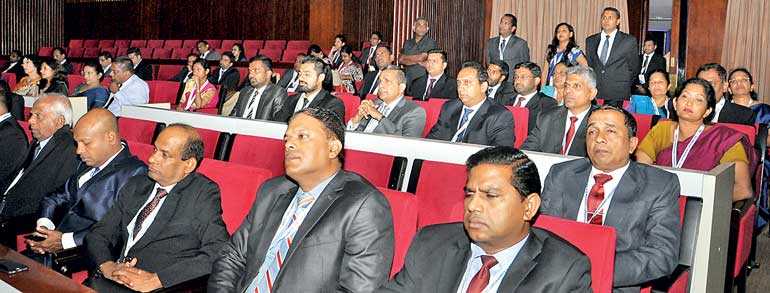

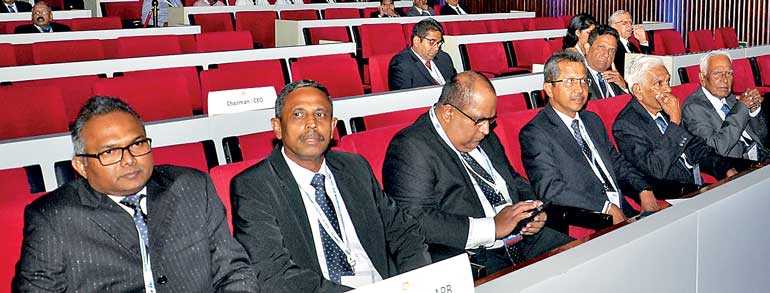

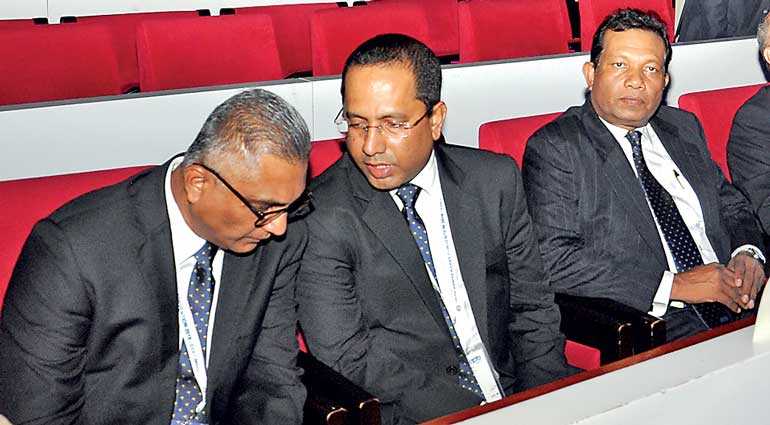
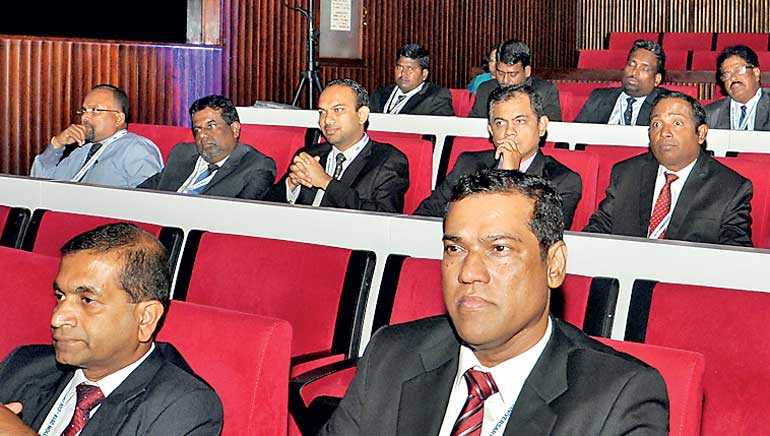


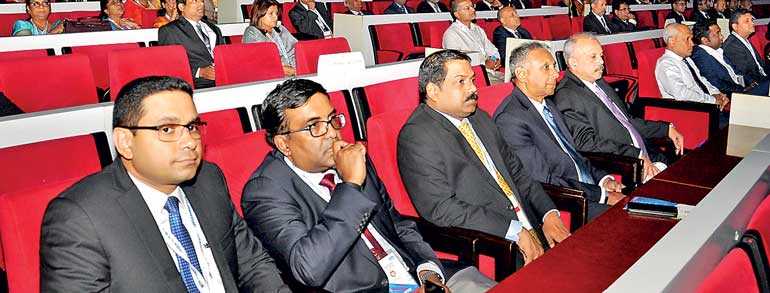
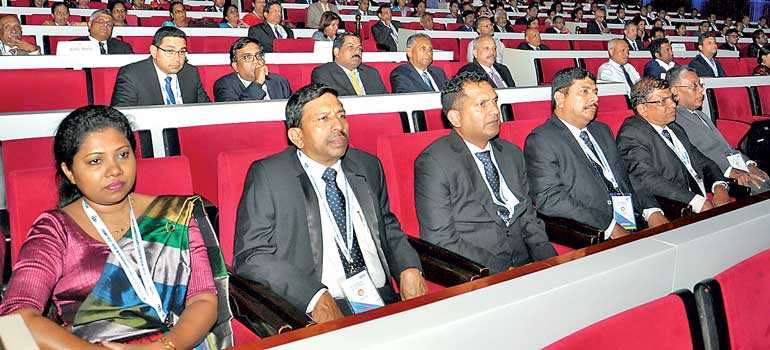
Pix by Ruwan Walpola